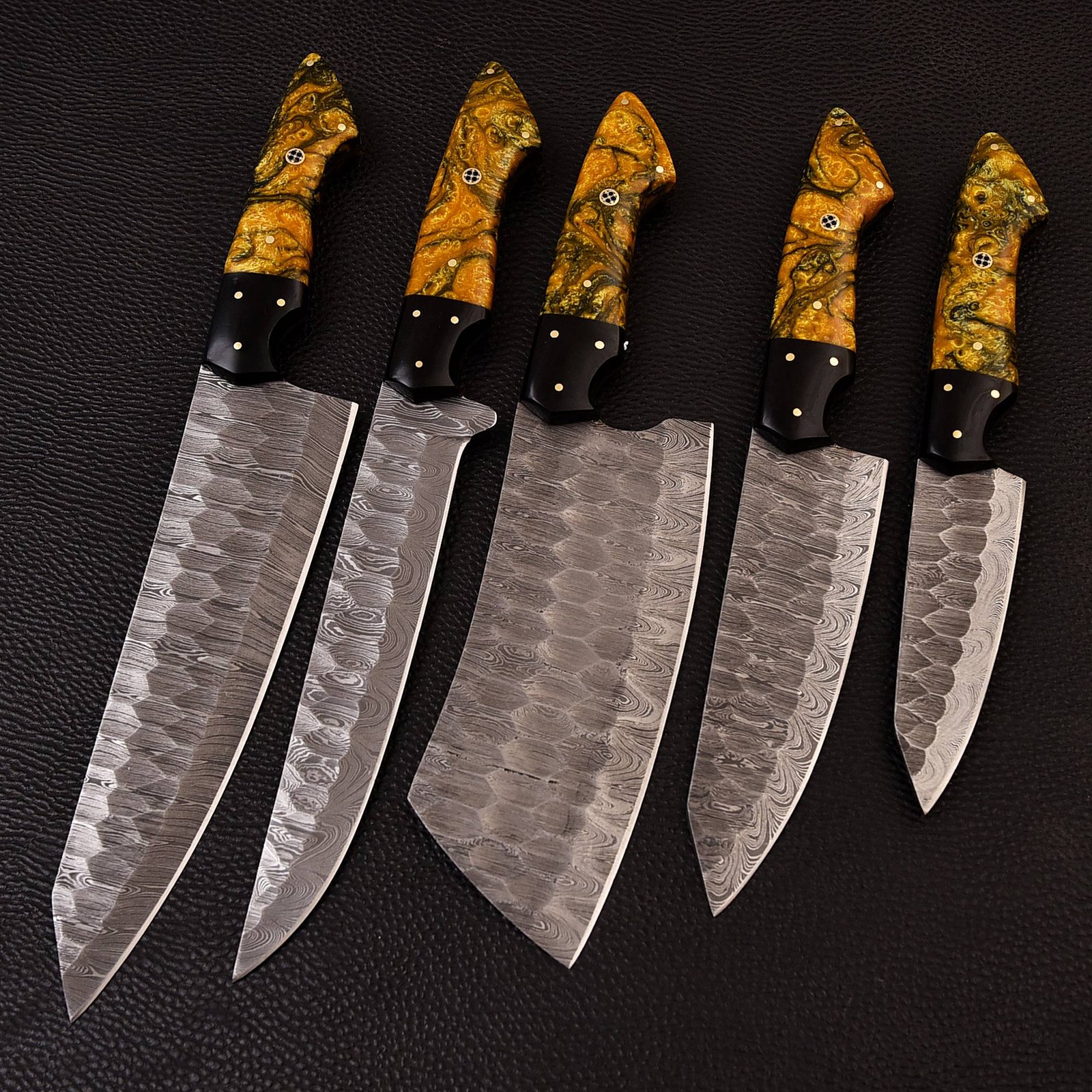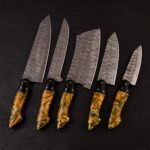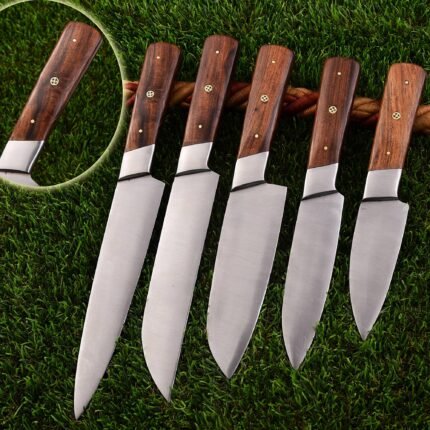Cleaver : A cleaver can take on heavy vegetables like different varieties of squash and root vegetables with more force than a chef’s knife or santoku knife. Aside from breaking down tendons and bones, cleavers can also be used for pounding, mincing, dicing, and slicing of a variety of other foods
Butcher knife: have a long curved blade with a sharp point at the end which helps with cutting through meat cleanly and easily with sawing motion
Cutting through skin , cartilage and bones
Portioning large portions of meat, including whole carcasses racks of ribs and beef primal cuts
Trimming fat and sinew
Paring knife: are light weight and have a short blade with a pointed tip to make them useful for delicate knifework
peeling skins for garnishes
deveining shrimp
trimming excess fat off meat
Boning knives : Boning knives are used for deboning, trimming, and slicing all kinds of animal (or fish) proteins. Their narrow blades can range from rigid (for cutting through thick cartilage) to flexible (for bending between bones and the surrounding meat).
Knife maintenance: proper sharpening, cleaning and storage are all important knife safety tips
Clean your knife as soon as you are done using it to prevent cross contamination
Wash your knifes by hand rather than running them through the dishwasher
Regularly sharpen and hone your knives to keep the blade sharp
Allow knives to air dry completely before storing them
Always wash your knives when you receive the shipment because oil is used to keep them safe from rust

























Reviews
There are no reviews yet.